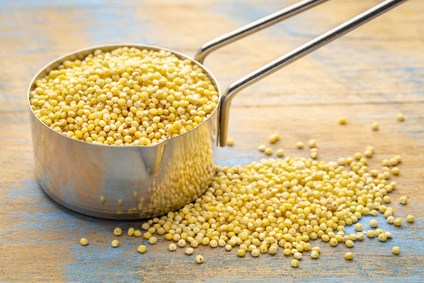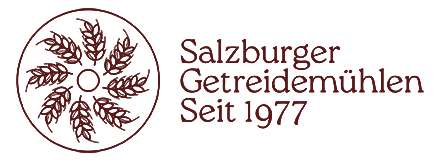
Whether golden millet, panicle millet, foxtail millet or teff – all these cereals belong to the collective term millet. Millet is a very ancient cereal that was cultivated in Europe as well as in Africa and Asia. In Europe – millet porridge was very popular with the Gauls and the Germanic tribes – millet was replaced by corn and potatoes in the 19th century because they were more productive.
Millet is a small, round grain and belongs to the spelt cereal. When unhusking millet, it may happen that the grain is somewhat damaged. This can cause oils to leak out, which then begin to oxidize. For this reason, before using millet for cooking, it should be washed thoroughly. Even though the husk is removed, millet still counts as a whole grain.
As for the ingredients of millet, they vary and are different depending on the variety. So is the protein content. The proteins in millet are not complete, which means that additional amino acids must be obtained through the diet. Millet has a high fat content, especially in the germ. There is also a lot of fat in millet compared to other grains.
The vitamin content in millet is not very special, but you can find important minerals and trace elements. For example, millet contains three times as much iron as wheat.
Millet also contains silica. Silica is formed from the combination of silicon with oxygen. Silicon is essential and must also be added through the diet. Silica is said to be good for bones, skin and hair. Here, however, it must be said that the accuracy of the statements about the effect of silicic acid remains scientifically questionable.
Now if you still want to know how to grind or prepare millet, check out our last post: https://www.getreidemuehle.com/de/hirse-mahlen/
Sources:
Münzing-Ruef, I. (1999): Kursbuch gesunde Ernährung. The kitchen as a pharmacy of nature. Munich: Zabert Sandmann GmbH, p. 236f
https://de.wikipedia.org/wiki/Hirse
https://www.wissen.de/wortherkunft/hirse
Address:
Gasteigweg 25,
5400 Hallein
Austria
Opening hours:
Monday to Thursday: 09 – 16:00
Friday: 09 – 12:00
Contact:
Phone: +43 6245 83282
E-mail: [email protected]
Address:
Gasteigweg 25,
5400 Hallein
Austria
Opening hours:
Monday to Thursday: 09 – 16:00
Friday: 09 – 12:00
Contact:
Phone: +43 6245 83282
E-mail: [email protected]

